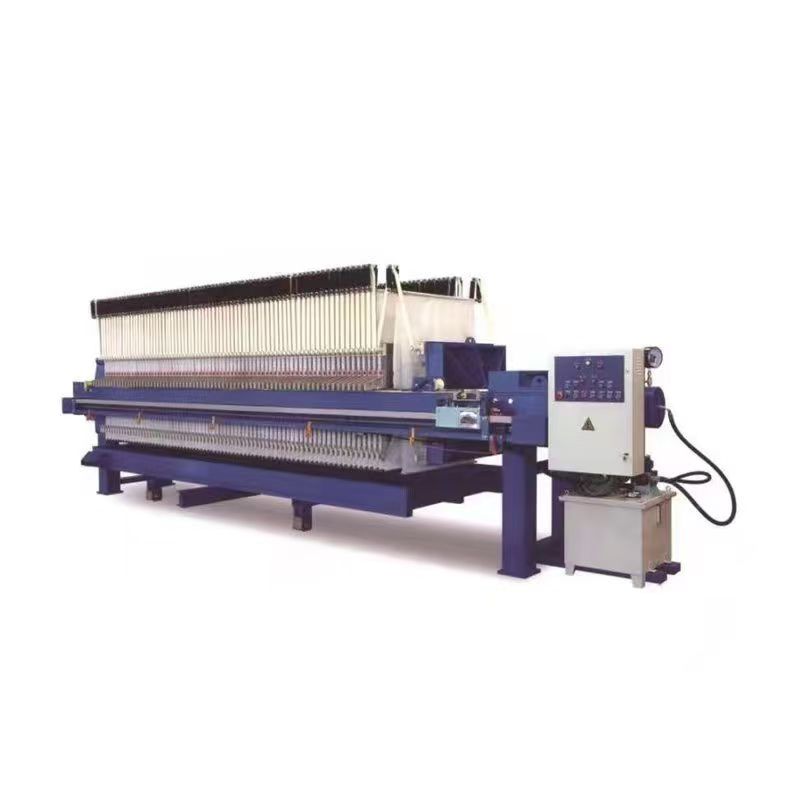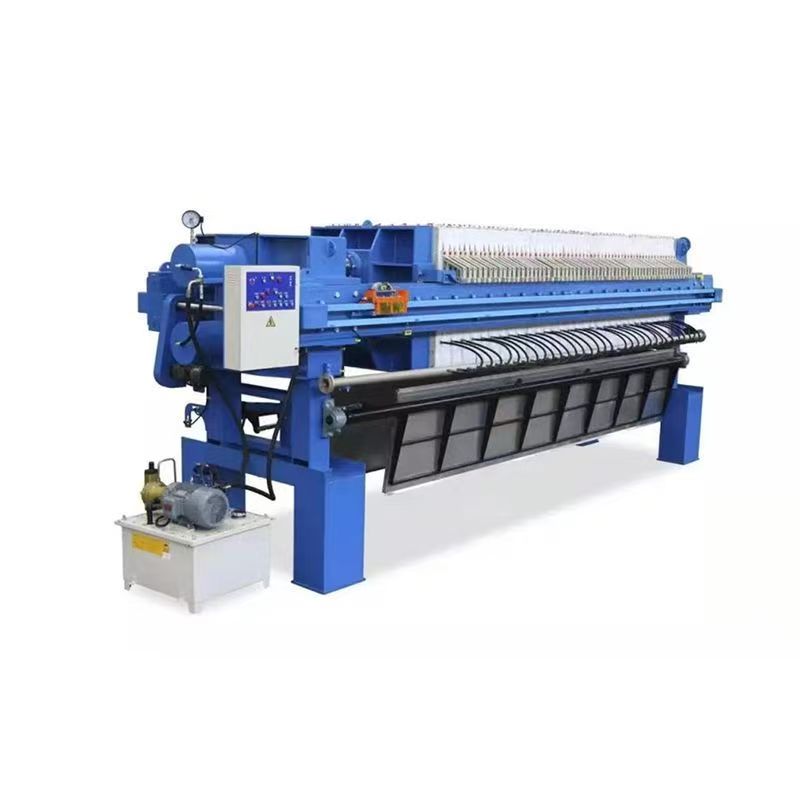Introduction to Air Flotation Machine Equipment
During operation, the filter plate and filter frame are tightly compressed by a clamping device to form a closed filtering chamber. Subsequently, the suspension to be processed enters the filtration chamber through the feed hole on the filter frame under the pressure of the feed pump. Under pressure, the liquid passes through the filter cloth and is discharged along the groove channel of the filter plate, becoming the filtrate; Solid particles are intercepted by the filter cloth and gradually accumulate in the filter chamber to form a filter cake. When the filter cake fills the filter chamber or the filtrate flow rate significantly decreases, stop feeding, release the clamping device, sequentially pull open the filter plate and frame, peel off the filter cake, and complete one filtration cycle.
Working Principle
Durable and sturdy structure: The frame of the plate and frame filter press is made of high-strength cast iron or high-quality steel welded together. After strict anti-corrosion treatment, it can withstand high working pressure, ensuring that the equipment remains stable and not easily deformed during long-term operation, with a service life of up to 10-15 years.
Flexible filter cloth selection: Multiple materials such as polypropylene and polyester can be selected according to different material characteristics and filtration accuracy requirements. The filter cloth has good filtration performance, wear resistance, and chemical stability, with a diverse range of pore sizes, which can effectively intercept solid particles of different sizes and ensure the filtration effect.

Specifications and Parameters
Convenient loading and unloading design: The loading and unloading operation of the filter plate and filter frame is simple, making it easy to replace and clean the filter cloth, as well as clean the residual filter cake, greatly reducing the difficulty of equipment maintenance and labor costs. At the same time, some models are equipped with an automatic pull plate system, which can automatically open and close the filter plate, further improving work efficiency.
Efficient compression method: Multiple compression methods such as manual, mechanical, hydraulic, etc. are used. The hydraulic compression system has the advantages of stable pressure, easy operation, and high degree of automation. It can accurately adjust the compression force according to actual needs, ensure good sealing of the filter chamber, and prevent liquid leakage.
Modular combination: The number of filter plates and frames in the equipment can be flexibly increased or decreased according to the processing capacity. By increasing or decreasing the number of plates and frames, the filtering area can be adjusted to meet the solid-liquid separation needs of different scales, with strong scalability and adaptability.
Application Scope
1.Chemical Industry:
Widely used for solid-liquid separation in the production of dyes, pigments, resins, fertilizers, etc. It effectively treats production wastewater and recovers valuable solid materials, enabling resource reuse and reducing environmental pollution.
2.Food and Pharmaceutical Industry:
Applied in food processing (e.g., starch, juice, oil production) and pharmaceutical fields to separate impurities from products and concentrate materials, ensuring product quality meets high standards and complies with food hygiene and pharmaceutical production regulations.
3.Metallurgy and Mining:
Used to treat mining wastewater from ore dressing processes and metallurgical waste residues, achieving dry tailings discharge to reduce the land occupation of tailings ponds and mitigate environmental pollution risks from tailings. It also recovers useful metal resources to improve resource utilization efficiency.
4.Sewage Treatment:
As a critical equipment for sludge dewatering in wastewater treatment plants, it performs deep dewatering on excess sludge to reduce sludge volume, facilitate subsequent transportation, landfilling, or resource utilization, and lower sludge treatment costs.
5.Other Fields:
Applied in industries such as ceramics, electroplating, and papermaking to separate waste residues and wastewater generated during production, achieve clean production, meet enterprises’ environmental discharge requirements, and support their sustainable development.